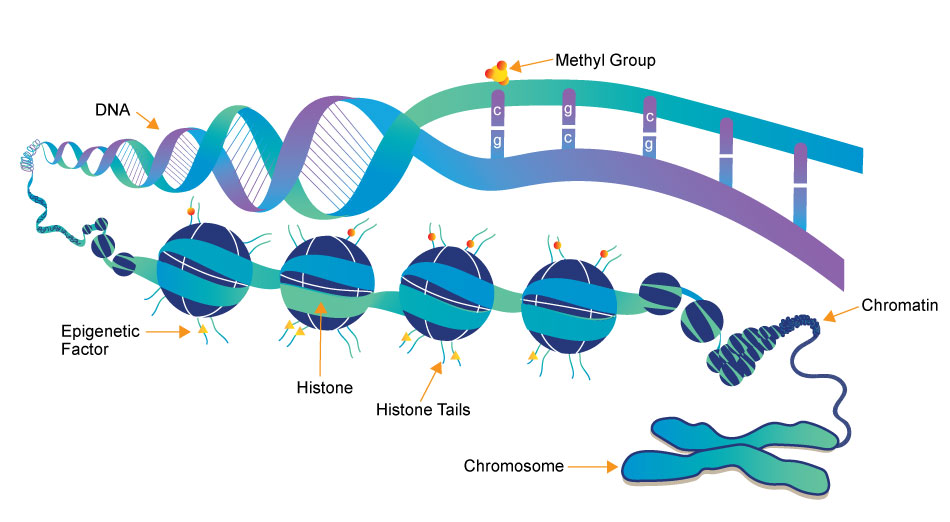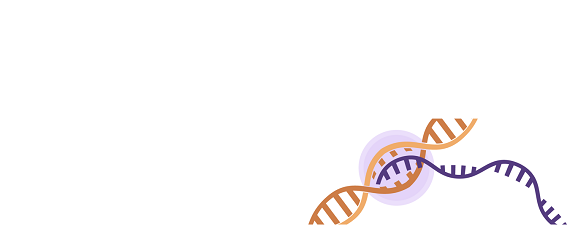Epigenetics


Epigenetics research delves into the molecular mechanisms that control gene expression and cellular traits without altering the underlying DNA sequence. One crucial aspect of this field is the role of small molecules, which act as powerful regulators of epigenetic modifications. These small compounds, typically comprising a few dozen to a few hundred atoms, have emerged as essential tools in understanding and manipulating the epigenome.
- DNA Methylation Inhibitors: Small molecules like 5-azacytidine and 5-aza-2'-deoxycytidine are DNA methyltransferase inhibitors. They block the addition of methyl groups to DNA, leading to DNA demethylation. This can reactivate silenced genes, potentially offering therapeutic avenues for conditions like cancer.
- HDAC inhibitors: HDACs remove acetyl groups from histone proteins, contributing to gene repression. Small molecule HDAC inhibitors, such as Vorinostat and Romidepsin, can reverse this process by increasing histone acetylation, allowing genes to be more accessible for transcription. These inhibitors are being explored for cancer therapy and other conditions.
- Histone Methyltransferase Inhibitors: Small molecules like GSK126 inhibit specific histone methyltransferases, affecting histone methylation patterns. This can alter gene expression, making them promising candidates for cancer and other diseases with epigenetic dysregulation.
- RNA Modulators: Small molecules can also target non-coding RNAs involved in epigenetic regulation. For instance, small molecules called small interfering RNAs (siRNAs) can be designed to target and degrade specific long non-coding RNAs, influencing gene expression.
- Epigenetic Reader Domain Inhibitors: These small molecules target proteins that recognize and bind to specific epigenetic marks. Examples include inhibitors of bromodomain-containing proteins (BET inhibitors), which can disrupt gene regulation by interfering with protein-DNA interactions.
Small molecules in epigenetics research not only provide insights into the fundamental biology of gene regulation but also hold immense promise for developing novel therapeutics. Their ability to selectively modulate specific epigenetic marks and pathways has led to ongoing clinical trials and drug development efforts for various diseases, including cancer, neurological disorders, and inflammatory conditions. Understanding and harnessing the power of these small molecules is at the forefront of modern epigenetics research, offering new hope for precision medicine and targeted therapies.
3 key components involved in the regulation of epigenetic modifications
Epigenetics Writer
Epigenetics writers are enzymes responsible for adding chemical marks or modifications to DNA or histone proteins. These marks include DNA methylation (addition of methyl groups to DNA) and histone modifications (such as acetylation, methylation, phosphorylation, etc.).
Epigenetics Reader
Function: Epigenetics readers are proteins that can recognize and bind to specific epigenetic marks on DNA or histones. These reader proteins interpret the epigenetic code and facilitate downstream cellular processes, such as gene activation or repression.
Epigenetics Eraser
Function: Epigenetics erasers are enzymes responsible for removing or reversing epigenetic marks on DNA or histones. This process allows for the dynamic regulation of gene expression and the resetting of epigenetic states during various stages of development and in response to environmental changes.
-
LSD1 抑制剂
GSK2879552 是一种口服可用的、不可逆的赖氨酸特异性去甲基化酶1(LSD1)抑制剂,具有潜在的抗肿瘤活性。- Nicolas A Fraunhoffer, .et al. , EBioMedicine, 2023, Jun;92:104602 PMID: 37148583
-
HDAC/ACE 抑制剂
Sinapinic acid(Sinapic acid)是一种从Hydnophytum formicarum Jack. Rhizome中提取的酚类化合物,作为HDAC的抑制剂,具有2.27 mM的IC50值,同时也抑制ACE-I活性。Sinapinic acid具有强大的抗肿瘤活性,能诱导肿瘤细胞的凋亡。 -
MEK/Aurora 抑制剂
BI-847325 是一种口服生物利用度高的、选择性的双重 MEK/Aurora 激酶抑制剂,其半抑制浓度(IC50)分别为:针对 Xenopus laevis Aurora B 为 3 nM,针对人类 Aurora A 和 Aurora C 为 25 nM 和 15 nM,以及针对人类 MEK1 和 MEK2 为 25 nM 和 4 nM。目前处于临床试验第一阶段。- Hilda Samimi, .et al. , Cancer Cell Int, 2022, Dec 8;22(1):388 PMID: 36482411
- Hilda Samimi, .et al. , Thyroid Res, 2021, Dec 3;14(1):27 PMID: 34861882
- Hilda Samimi, .et al. , DARU J Pharm Sci, 2019, 1-7 PMID: 31077090
-
TNKS2 抑制剂
NVP-TNKS656 是一种高效、选择性强且可口服的 TNKS2 抑制剂,其 IC50 为 6 nM;对 PARP1 和 PARP2 的选择性超过 300 倍。 -
Calcineurin/PP2B 抑制剂
Ascomycin 是 tacrolimus (FK506) 的乙基类似物,具有强大的免疫抑制特性。它已被研究用于治疗自身免疫疾病和皮肤病,以及用于预防器官移植后的排斥反应。 -
LSD1 抑制剂
ORY-1001 是一种口服活性的、选择性的赖氨酸特异性去甲基酶 LSD1/KDM1A 抑制剂,其 IC50 值小于 20 nM,对相关的 FAD 依赖性氨氧化酶具有高度选择性。目前处于第一阶段临床试验。 -
Selective SIRT2 抑制剂
SirReal2 是一种效力强大且选择性高的 Sirt2 抑制剂,其 IC50 为 140 nM。- Yang Li, .et al. , Neoplasia, 2018, Jul; 20(7): 745-756 PMID: 29925042
-
HDAC6 抑制剂
ACY-738 是一种效力强大且选择性高的 HDAC6 抑制剂,具有改善的大脑生物利用度。ACY-738 以低纳摩尔的效力抑制 HDAC6,并且对于 I 类 HDACs 的选择性为 60 至 1500 倍。- Dao Xu, .et al. , Immunohorizons, 2024, Sep 1;8(9):668-678 PMID: 39259207
- Guang Bai, .et al. , Epigenetics of Chronic Pain, 2019, Pages 1-48
-
BET bromodomain 抑制剂
CPI 0610 是一种小分子抑制剂,针对 Bromodomain and Extra-Terminal (BET) 蛋白家族,具有潜在的抗肿瘤活性。 -
JAK2 抑制剂
NS-018 是一种口服生物利用度高的小分子抑制剂,针对 Janus-associated kinase 2 (JAK2) 和 Src-family kinases,具有潜在的抗肿瘤活性。 -
JAK2 抑制剂
NS-018 maleate 是一种针对 JAK2 的 ATP-竞争性小分子抑制剂,在 Ba/F3-JAK2V617F 细胞中的 IC50 为 470nM。相较于其他 JAK 家族激酶,如 JAK1、JAK3 和 酪氨酸激酶2,对 JAK2 的选择性高出30-50倍。 -
EZH2 抑制剂
Lirametostat(CPI-1205)是一种高效(生化 IC50 = 0.002 μM,细胞 EC50 = 0.032 μM)且选择性的 EZH2 抑制剂。- George L.Joun, .et al. , bioRxiv, 2025, Jan 8
-
KDM 抑制剂
2,4-Pyridinedicarboxylic Acid (2,4-PDCA) is an inhibitor of histone lysine-specific demethylases that targets on JMJD2A (KDM4A), KDM4C, KDM4E (IC50, 1.4 µM), KDM5B (IC50, 3 µM), KDM6A and other 2-oxogynases. -
KDM2/7 抑制剂
TC-E 5002 是一种选择性的组蛋白去甲基化酶 KDM2/7 亚家族抑制剂(IC50 值分别为 KDM7A 0.2 µM、KDM7B 1.2 µM、KDM2A 6.8 µM、KDM5A 55 µM、KDM4C 83 µM、KDM6A >100 µM 和 KDM4A >120 µM)。在体外实验中,能够抑制 HeLa 和 KYSE-150 癌细胞的生长。




